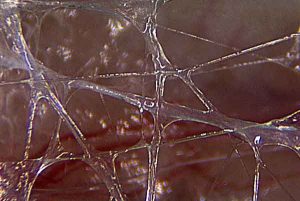Fascial manipulation is a manual therapy technique for treating pain from soft tissue injury.
What is fascia manipulation?
Fascial Manipulation is not the same as Active Release Therapy (ART) or Myofascial Release.
Fascial Manipulation (FM) is a scientifically-validated treatment technique utilizing manual therapy that targets muscles and fascia in order to improve musculoskeletal pain and stiffness, while restoring muscular balance, increasing flexibility and improving coordination. Through this unique manipulation of muscles and connective tissue, FM has been able to reduce physical discomfort for countless individuals.
What is fascia?
Our connective tissue, referred to as fascia, is present throughout our body. In the past it was thought of merely as “filler” that simply encompassed more crucial parts such as bones, ligaments, tendons and muscles; however, modern-day science has identified our fascial system as a 6th sensory organ vital for controlling movement with its coordination and feedback mechanisms.
Our connective tissue normally contains a liquid lubricant between our fascial layers that facilitates movement allowing our connective tissues to slide across each other as we go about our daily activities. Unfortunately, when there is trauma or tension on the body’s tissues, this fluid thickens and generates adhesions between fascial layers. These can trap small nerves and capillaries resulting swelling, pain, and inflammation.
Fascia Manipulation is a system that diagnoses and relieves these adhesions in the connective tissue which, consequently, reduces pain and restores mobility. Not only does this technique provide relief to a specific area of our body, but it also alters the communication between that region and our brain as well – ultimately resulting in improved movement control.

How does fascial manipulation work?
Myofascial Manipulation includes a comprehensive evaluation of the myofascial system to identify stiffness and restrictions in coordination and movement. We then direct treatment toward those fascial adhesions, also called Centers of Coordination (CC’s) and Centers of Fusion (CF’s), with an aim to reduce these fascial adhesions while improving motion control. With improved movement, joints and adjacent soft tissues become relieved from the strain which leads to decreased pain as well as increased healing capability in soft tissue. This melts the adhesions restoring normal gliding of the soft tissues which restores normal movement control through our nervous system.
What are symptoms of tight fascia?
Research has shown that nearly all painful conditions are accompanied by by inflammation in the fascia. Fascia is a web of connective fibers embedded all over your body, saturated with nerves that make it almost as sensitive as skin – so when it gets stressed or injured, it constricts up.
Signs and symptoms of tight fascial tissue are:
- deep, aching pain in a muscle
- pain that feels better with movement
- pain that responds well to heat therapy
- a “knot” in a muscle
Does fascial manipulation technique hurt during treatment?
Depending on the severity and location of the injury, myofascial release can either feel very relaxing or it can be uncomfortable or even painful. If the fascia tension is deep and requires a lot of pressure, it can feel very uncomfortable during the physical therapy session. Patients often observe a notable decline in pain and improved mobility after just one treatment, but it can take several treatments to fully restore and heal from the injury.
Side effects of fascia release can include:
- bruising
- swelling
- soreness
- sensitivity
Generally, these effects may last a few days; however, not everyone experiences them.
Benefits of fascial manipulation
With improved movement, joints and adjacent soft tissues become relieved from the strain which leads to decreased pain as well as increased healing capability in soft tissue. This melts the adhesions restoring normal gliding of the soft tissues which restores normal movement control through our nervous system.
Fascial manipulation can be effective in treating the following conditions
If you are struggling with pain in your low back, neck, hip, knee, shoulder or foot and ankle area; physical therapy that includes fascial manipulation can provide relief. Additionally it has been known to help those suffering from TMJ discomfort and tension headaches.
- Low back pain
- Neck pain
- Hip pain
- Knee pain
- Shoulder pain
- Foot and ankle pain
- TMJ pain
- Tension headaches
